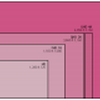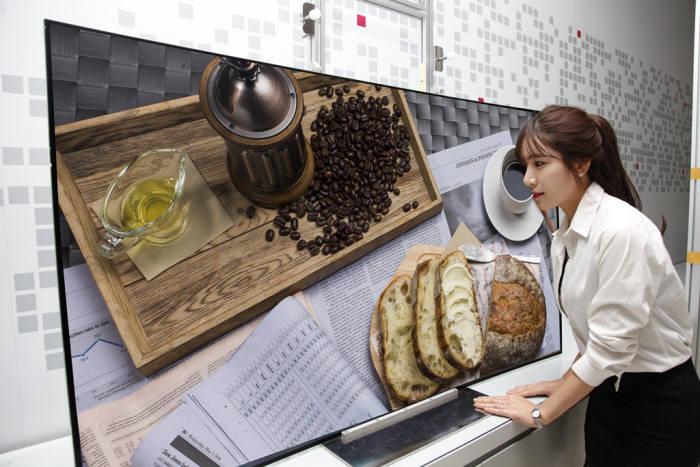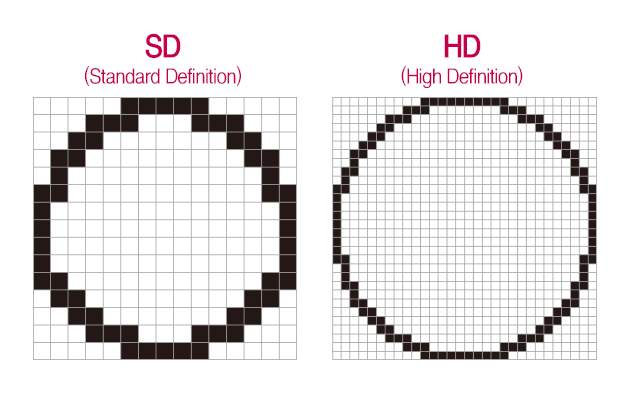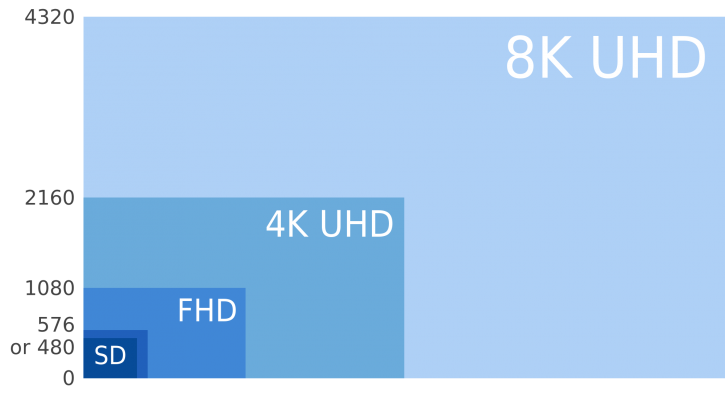And we say, not even in ten years it will reach the consumer market. LG is carefully pushing 8K Quad Ultra HD display technology, or is warming us up for it. 8K Quad Ultra HD will get a 7680 x 4320 pixels native resolution which is sixteen times your Full HF telly.
Since Japanese engineers first demonstrated high-resolution at the International Television Engineers Conference in 1981, the demand for high-quality content has continued to grow. The high-resolution display trend has already begun with Full-HD TVs being commonplace in homes and QHD (Quad High Definition) quality panels being adopted in smartphones with screens that are the size of the palm a person’s hand. The high-resolution contents that provide realistic images and a true sense of immersion have now moved beyond 4K and the focus has now turned to super-high-resolution 8K.
The World is Turning to 8K
It is not difficult to hear the call for bigger and clearer images from everywhere around the world. When the BBC took on the broadcasting of the 2012 Olympics, they said, ‘Since 8K resolution is the highest resolution that the human eye is capable of seeing, it will put an end to the resolution discussion,’ predicting that ‘ultimately, 8K images will overtake the market.’
It has become clear that Japan is planning to launch an 8K SHV test broadcast and then promptly restructure the UHD service. Apple has also announced that they will release the ‘iMac 8K’ with a super-high resolution display later this year. Korea is also preparing to offer an 8K service demonstration at the 2018 Pyeongchang Winter Olympics. LG Display displayed a new beacon of the 8K era by revealing their 98-inch 8K Color Prime Ultra HDTV at CES 2015.
The Resolution and Pixels of 8K
How will 8K improve image quality over what we are already experiencing? Let’s take a closer look through resolution which is used as the concept to explain image quality.
The screen depicted in the image above is a 7,680 x 4,320 resolution screen. It is 2 times the resolution of a 4K screen but in actuality, the number of pixels is 4 times that of 4K which is 16 times more than Full HD. But what is the correlation between resolution and pixels? In short, by increasing the number of pixels on a screen, the viewer can enjoy a clearer picture.
For example, a 5-inch HD resolution smartphone screen with 900,000 pixels boasts higher image quality than a 5-inch SD resolution smartphone screen with 340,000 pixels. Likewise, FHD (1,920×1,080) provides clearer image than HD, and resolution continues to increase with QHD (3,840×2,160) and UHD (4,096×2,160). PPI (Pixel per Inch) is a term used to describe how many pixels are in an inch of screen and also represents the density of pixels. In order to increase the size of a display while maintaining the same resolution, the PPI must also be increased.
LG Display, Preparing for the 8K Era
LG Display has already succeeded in making super-high resolution a reality with the revealing of their 98-inch 8K UHD display at CES 2015. LG Display managed to improve the brightness of its 55-inch 8K UHD panel with 7,680×4320 resolution and 500nit by implementing M+ panel technology, which adds a white pixel to the existing RGB sub-pixel structure. IPS technology was also applied to make an impressive panel that has the advantage of high resolution and a wide viewing angle even on large scale screens.
With these developments, LG Display has expanded the Ultra-HD (UHD) lineup and is showing off diverse range of screen sizes with super-high resolution displays such as 8K. There are also high expectations in the commercial signage market as there is a need for clear large-scale high resolution screens. Look for great strides to be made by LG Display in the super-high resolution display era.






